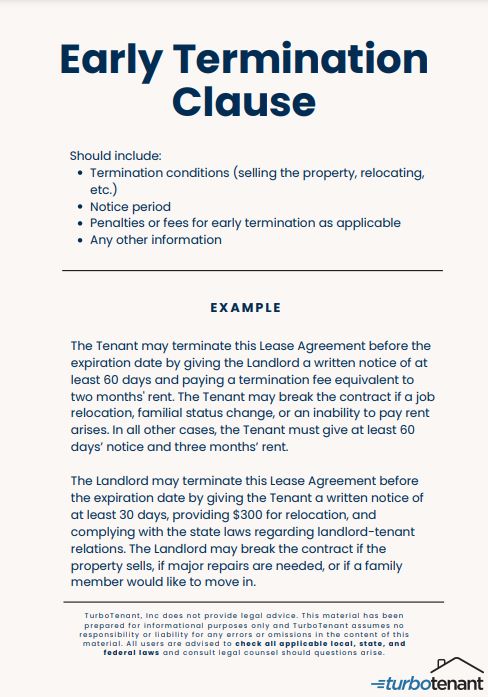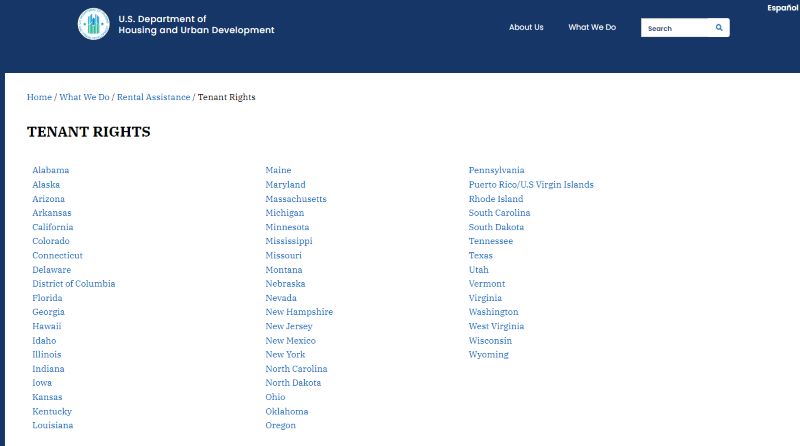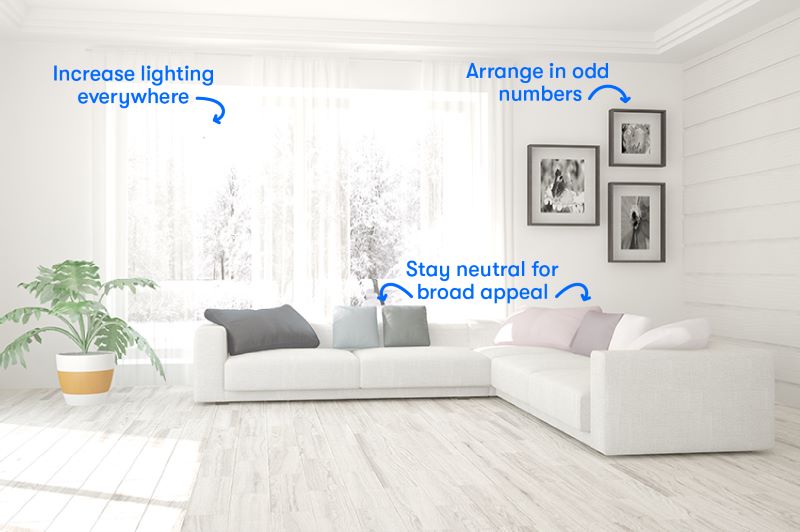Selling a house with tenants in place can add an extra layer of complexity to the sale of an investment property. However, it is possible to do it with the right legal and ethical knowledge. Since you own the property, you have the right to sell your property at any time, even with tenants still residing in the home.
For a smooth sale, you will want to do all you can to minimize the impact on the tenant while maximizing your profitability during the sale. Read along, and I’ll equip you with information and strategies to help you navigate this type of sale.
Step 1: Evaluate the Lease
Identifying what type of lease you have in place is the first step in selling a house with tenants. Knowing the type of lease will help you determine your legal options. In most states, tenants have the right to stay in the home until their lease expires, no matter the type of lease. Consulting an attorney who knows your state and local laws will help guide you through this process.
The two most common types of leases are fixed-term leases and month-to-month leases. Let’s look at each more in-depth:
Fixed-term Leases
A fixed-term lease is a rental agreement with a predetermined start and end date specified by the contract. These leases can have a variety of different terms, but most commonly these leases are typically not automatically renewed. For the lease to renew past the end date, action must be taken from both the landlord and the tenant.
An early termination clause may allow the lease to be terminated by either party prior to the specified end date. This typically involves a termination fee or other type of financial considerations. If your lease has this type of provision, follow the process outlined in the lease agreement and consult an attorney before speaking to your tenants.

Early termination clause example (Source: TurboTenant)
Month-to-month Leases
A month-to-month lease, or periodic tenancy, is a rental agreement that renews automatically every month until notice is given by either the tenant or the landlord. Each state will have its own laws in regard to the tenant rights and notice periods, but most commonly, 30 days is accepted and sufficient.
For state-specific information on tenant rights, visit the U.S. Department of Housing and Urban Development (HUD) or check your state government website. This information is typically under landlord-tenant law or tenant rights and responsibilities.

Resources for tenant rights by state (Source: HUD)
Step 2: Understand Your Options
Now that you know your lease type, it’s time to look at your options. There are several ways to sell a property with tenants. Review the options to determine which would benefit you and your tenant most.
Step 3: Consider the Pros & Cons of Selling a House With Tenants
The next step is to evaluate the pros and cons of selling a house with renters in place. Selling an occupied home can present a unique set of challenges. There are advantages, such as continued rental income for the landlord, as well as drawbacks, like scheduling obstacles. Awareness of these issues can help you make the best decision to sell the property.
Here is a breakdown of the pros and cons:
| PROS | CONS |
|---|---|
| Home staging: The home will already have furniture in place, making it visually appealing to potential buyers. | Difficult tenants: Some tenants will just not cooperate, making it difficult to sell the property. |
| Continued income: Keeping tenants in place allows you to continue earning income throughout the sale. | Limited showings: Scheduling showings around tenant availability can be restrictive and cause the sale to take longer. |
| Security for the property: Occupied homes are less likely to be vandalized. | No control over presentation: Maintaining a home ready to show with tenants in place might be challenging. |
| Increased buyer pool: Since the home is already rented, continued income will appeal to investors. | Impact on pricing: Occupied homes requiring a tenant to stay in place may sell slightly less than a vacant home. |
Additionally, there are a few other factors to weigh in your decision. When looking at market conditions, having a tenant may not be a huge drawback if you are in a seller’s market with higher buyer demand. On the other hand, more houses are for sale in a buyer’s market, which could limit your buyer pool. The length of the tenant’s lease also plays a part because a shorter duration of a lease may not be as deterring as a longer lease period.
Step 4: Work With the Tenants
Now it’s time to start talking to your tenants about their options. I recommend consulting an attorney or real estate agent professional to ensure you know tenant rights in your state before going into the conversation or providing notice.
When you sit down to break the news, consider these tips to have a meaningful and productive conversation:
- Be considerate: The last thing any person is expecting to hear is that they may have to move out of their home before they thought they would. Use positive language and come from a place of understanding to help encourage the tenants to cooperate.
- Communicate clearly: State exactly what you are looking to accomplish. What option did you decide to go with, and what would that look like for the tenants?
- Tell them what to expect next: Now that the tenant knows that you’re selling, tell them exactly what to expect next, from speaking with a real estate agent to getting the home ready to list.
- Offer to help find them a new home: Offering to help your tenant move on to the next phase of life can go a long way.
- Answer any questions: The tenants will likely have questions now and in the future. Be sure to answer any questions they have now and let them know they can contact you with additional questions.
- Solidify the plan: Before ending the conversation, make sure the tenants are clear on the plan, the next steps, and what you need from them.
There is always the risk of tenants getting angry and refusing to cooperate. Showing a home to a potential buyer while a tenant causes problems can be risky. Try finding ways to make the tenant less likely to sabotage your showings by offering compensation for cooperation. Offer a break on their rent or get creative with a gift card to their favorite restaurant if they have the property in show-ready condition and leave during the showing.
Step 5: Market & Sell the Property
Once you have decided if the tenant will stay during the sale, it’s time to determine the best way to market the property. Whether the tenant vacates or remains in the home, different strategies can be used to showcase the property to experienced or beginner investors and buyers who wish to be owner-occupied.
Here are some general tips to help you market your rental property for sale:
- Partner with a local real estate agent: Hiring a local real estate pro can get your property seen by more people. They can help you create an effective marketing plan to sell quickly or for the highest price.
- Strategically price the property: Consider whether you will be making repairs or selling the home as is. Price the home accordingly to remain competitive in the market.
- Highlight investment potential: Market the property to investors by offering a turnkey rental opportunity with or without tenants in place. Emphasize that the current tenants have been properly screened, take great care of the property, and are in good standing with rent payments.
Marketing the property based on whether the tenant vacates or remains in the home is different. Let’s take a more in-depth look at each of these situations.
If the Tenant Vacates
If the tenant moves out or you decide to wait until the lease expires to sell, the sale becomes more traditional. Remember, a vacant rental property translates to lost income for the landlord, so you’ll want to sell the property as quickly as possible. Create a financial breakdown that showcases the potential rental income for investor buyers. If you plan to offer a turnkey property that any buyer can enjoy, highlight any renovations completed after your tenant moved out.
If the Tenant Remains
If the tenant remains in the property during the sale, you should address any challenges upfront to encourage a smoother transaction. It is inevitable that the tenant will experience some disruption and inconvenience during this process. Try to minimize the inconvenience by being transparent, offering a helping hand, and being considerate of the tenant’s needs.
The table below outlines common pain points tenants may experience if they choose to remain in the home for the duration of the sale.
Pain Points | Challenge | Solution |
|---|---|---|
Showings | Tenant needs to leave during showings | Require private showings to have at least 24-hour notice and during times that are convenient for the tenant. |
Open Houses | Tenant must leave for an extended period of time | Give the tenant a gift card to a local venue such as a restaurant, movie theater, or other event to enjoy while out of the house. |
Property Condition | Tenant does not keep the property in showing condition | Offer a rent credit if the tenant has the home in show-ready condition or provide cleaning and maintenance services during the sale. |
Signage | Signs on the property encourage buyers to approach the tenant | Consider not placing a sign in the yard or adding a sign rider that states no solicitation. |
Rent | Tenant is behind on rent | Offer to waive any delinquent rent in exchange for move out or move forward with eviction proceedings. |
Bottom Line
Selling a property with tenants requires planning, clear communication, and flexibility. When you understand your options and work with your tenants, you will be able to smoothly navigate this process and achieve a successful sale. Remember that a good tenant can be a selling point for investors looking for turnkey rental properties, but poor tenants can make or break a sale.
